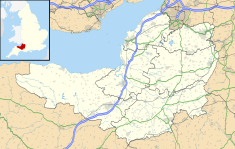
Grittleton is a village and civil parish in Wiltshire, England, 6 miles (10 km) northwest of Chippenham. The parish includes the hamlets of Foscote, Leigh Delamere, Littleton Drew and Sevington, and part of the hamlet of The Gibb.

The Church of Saint Leonard is a Norman church in Bengeo, Hertfordshire, England. Located on the hillside overlooking the shared Beane and Lea valley, the Grade I Listed church dates from about 1120, and is the oldest building in Hertford.

The Church of St Morwenna and St John the Baptist is the parish church of Morwenstow, north Cornwall, England, United Kingdom, the most northerly parish in Cornwall. The church is dedicated to Morwenna, a local saint, and to John the Baptist, and is recorded in the National Heritage List for England as a designated Grade I listed building. It is an active Anglican parish church in the diocese of Truro, the archdeaconry of Bodmin, and the deanery of Stratton. Its benefice is combined with that of St James, Kilkhampton to form the United Benefice of Kilkhampton with Morwenstow.

St John the Baptist's Church is in the village of Aldford, Cheshire, England. The church is recorded in the National Heritage List for England as a designated Grade II listed building. It is an active Anglican parish church in the diocese of Chester, the archdeaconry of Chester and the deanery of Malpas. Its benefice is combined with those of St Peter, Waverton and St Mary, Bruera. It is described by the authors of the Buildings of England series as "expensive" and "stiffly conventional".

The Church of All Saints in Wootton Courtenay, Somerset, England, dates from the 13th century and has been designated as a Grade I listed building.

St John the Baptist's Church is a redundant Anglican church in the village of Stanwick St John, North Yorkshire, England. It is recorded in the National Heritage List for England as a designated Grade I listed building, and is under the care of the Churches Conservation Trust. The site of the church is recognised as a Scheduled Monument, and it stands within the earthworks of Stanwick Camp, a settlement originating in the early Iron Age.

The Anglican Church of St John the Baptist in Midsomer Norton, Somerset, England, is a Grade II* listed building. St. John's is part of the Diocese of Bath and Wells.

St Andrew's Church is in the village of Great Ness, Shropshire, England. It is an active Anglican parish church in the deanery of Ellesmere, the archdeaconry of Salop, and the diocese of Lichfield. Its benefice is united with those of St Martin, Little Ness, and St John the Baptist, Ruyton-XI-Towns. The church is recorded in the National Heritage List for England as a designated Grade I listed building.

The Anglican Church of St Peter in Williton in the English county of Somerset is recorded in the National Heritage List for England as a designated Grade II* listed building.
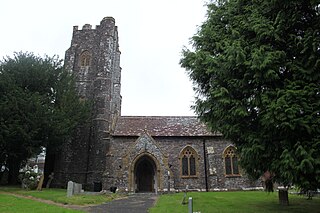
The Church of All Saints is an Anglican church in Chipstable, Somerset, England which probably dates from the early 13th century. It is located in the deanery of Tone, within the diocese of Bath and Wells. It is a Grade II* listed building.
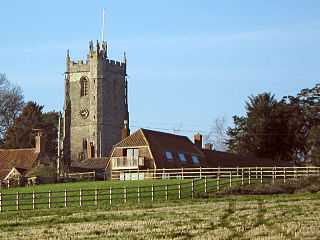
The Anglican Church of St Michael in Enmore within the English county of Somerset dates mainly from the 15th century, however some of the fabric of the building from the 12th century, including an arched doorway, survives. It is a Grade II* listed building.

The Anglican Church of St John The Evangelist at Kenn within the English county of Somerset has a Norman tower, with much of the rest of the church dating from around 1300. It has been designated as a Grade II* listed building.

The Anglican Church of St. Michael and All Angels in Flax Bourton in the English county of Somerset was built in the 12th century. It has been designated as a Grade II* listed building.
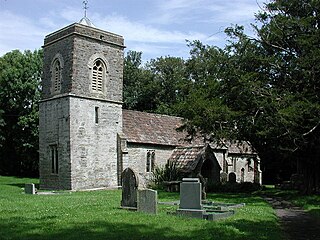
The Anglican Church of St John The Baptist in Biddisham within the parish of Badgeworth, Somerset, England was built in the 13th century. It is a Grade II* listed building.
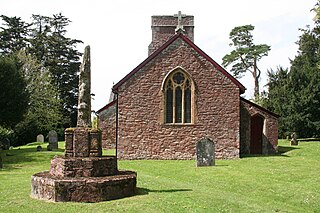
The Church of St John the Baptist in Heathfield, Somerset, England was built in the 13th century, from which the tower remains. It is a Grade II listed building. The churchyard cross may also be from the 13th century.

The Anglican Church of St John in Cutcombe, Somerset, England was built in the 13th and 14th centuries. It is a Grade II* listed building.

The Anglican Church of St Giles in Hawkridge, Somerset, England was built in the 14th century. It is a Grade II* listed building.

The Anglican Church of St John in Skilgate, Somerset, England was built in the 14th century. It is a Grade II* listed building.
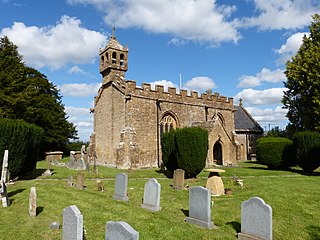
The Anglican Church of St Mary in Chilthorne Domer, Somerset, England was built in the 13th century. It is a Grade II* listed building.
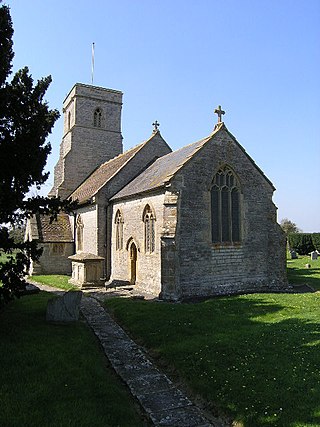
The Church of St Thomas of Canterbury in Lovington, Somerset, England, was built in the 13th century. It is a Grade II* listed building.

